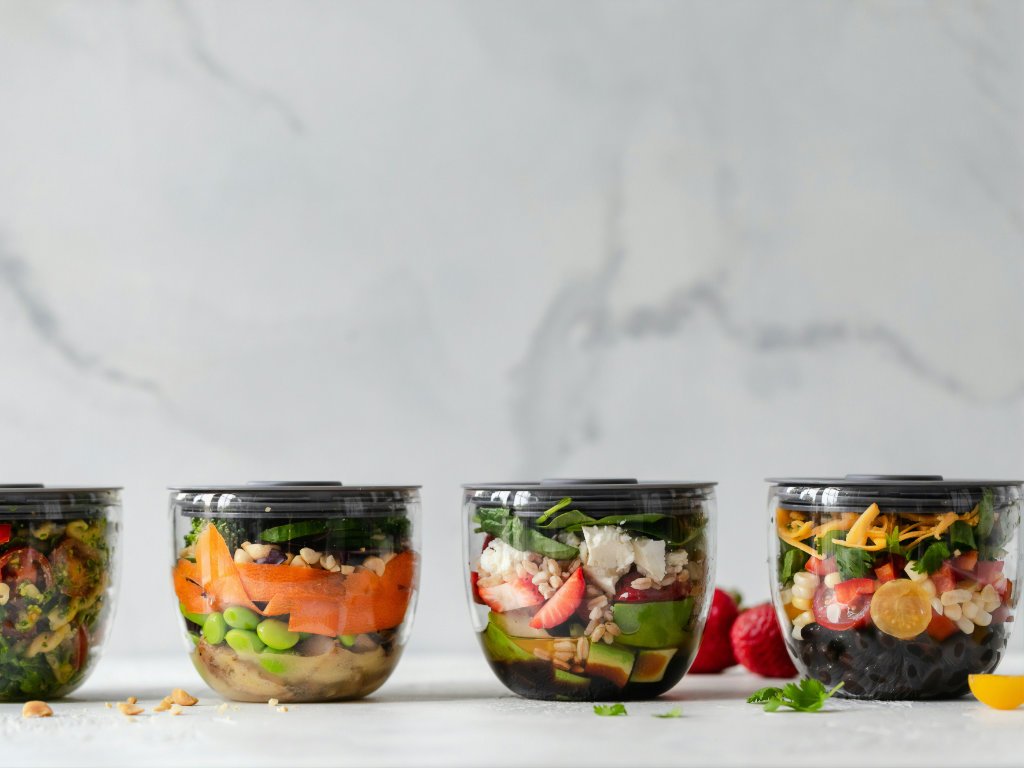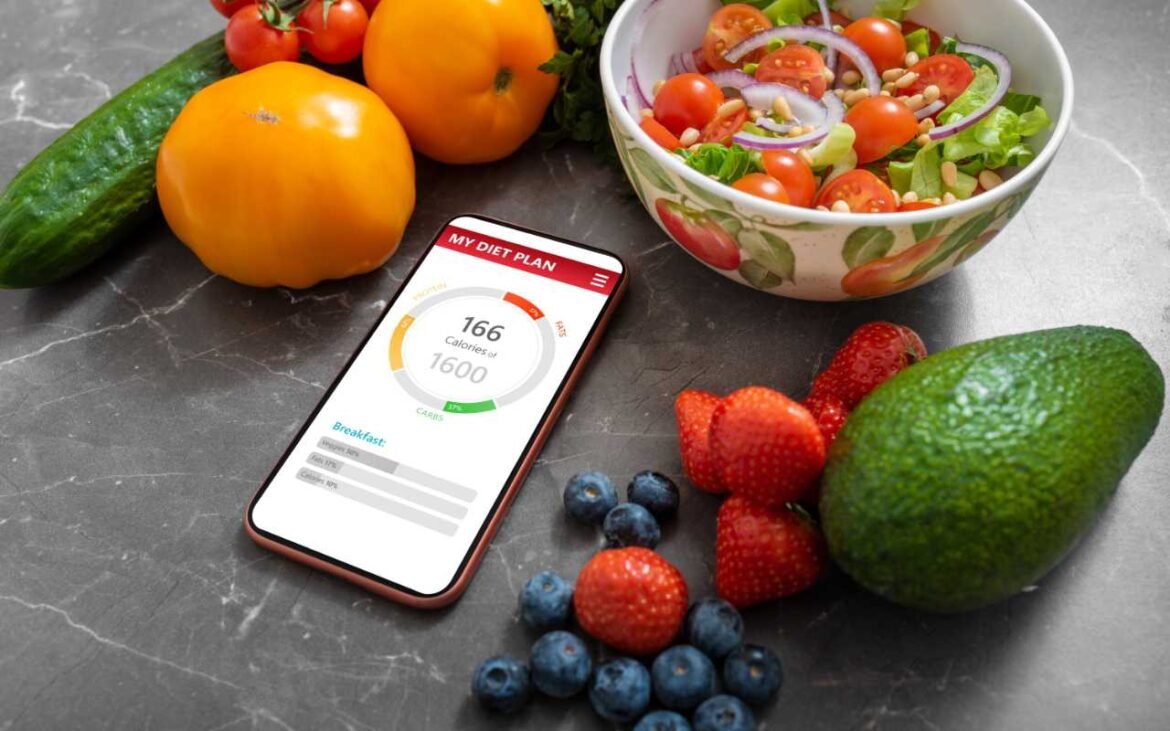Ever found yourself standing in front of your fridge at 6 PM, completely clueless about what to make for dinner? Yeah, we’ve all been there. That familiar feeling of panic mixed with hunger isn’t exactly the recipe for healthy eating, right? Here’s the thing though – innovative meal planning doesn’t have to be this complicated, time-consuming chore that only Instagram-perfect food bloggers can master.
Let’s be real for a second. Most of us have tried meal planning at least once, maybe got excited for a week or two, then life happened and we were back to our old habits of grabbing whatever was convenient. But what if I told you that with some fresh approaches and a bit of creativity, meal planning could actually become something you look forward to?
Why Does Innovative Meal Planning Matter for Your Health?
Here’s something that might surprise you – innovative meal planning isn’t just about saving time (though that’s definitely a nice bonus). It’s actually one of the most powerful tools for achieving optimal health and maintaining it long-term. When you plan your meals thoughtfully, you’re essentially setting yourself up for more consistent, nutritious, and enjoyable eating habits.
Research shows that effective meal planning encourages healthier food choices, increases variety in your diet, and can help prevent overweight and obesity. Think about it – when you’re scrambling for something to eat, you’re way more likely to grab processed foods or order takeout. But when you’ve got a plan? You’re in control.
The innovative part comes in when we start thinking beyond the basic “Sunday meal prep” approach. We’re talking about creating systems that work with your lifestyle, not against it. Maybe that means preparing components rather than full meals, or perhaps it’s about themed meal days that make decision-making easier while keeping things interesting.
Understanding Nutritional Guidelines: Your Foundation for Success
Before we dive into the fun, creative stuff, let’s talk about the foundation – nutritional guidelines. Now, I know what you’re thinking. “Guidelines” sounds about as exciting as watching paint dry, right? But bear with me here, because this is where innovation really starts to shine.
Nutritional guidelines are basically evidence-based recommendations that health authorities have developed to help us understand what healthy eating patterns look like. They give us targets for different food groups, nutrients, and overall calorie intake. The cool thing is, these aren’t meant to be rigid rules – they’re more like a framework that you can get creative with.
Here’s where innovative meal planning gets interesting. Instead of seeing guidelines as restrictions, you can use them as inspiration. For example, there are apps now that can automatically balance your weekly meal plan according to recommended servings. Pretty neat, right? Or you could create themed meal days – like Mediterranean Monday or Plant-based Wednesday – to naturally align with guideline diversity.
One of my favorite innovative approaches is reinventing classic comfort foods to pack in more nutrition. Take mac and cheese, for instance. You could swap regular pasta for chickpea pasta, sneak in some cauliflower, and use a blend of regular and nutritional yeast for the cheese sauce. Boom – you’ve just transformed a less nutritious meal into something that meets guidelines for protein, vegetables, and whole grains, while still satisfying that comfort food craving.
The key is finding ways to make these guidelines work for your taste preferences and lifestyle. If you’re someone who needs variety (like me), you might rotate through different cuisines each week to hit all your nutritional targets. If you prefer simplicity, you might find three or four base recipes that you can modify with different vegetables and proteins.
Exploring Food Varieties: Keep Things Exciting

Let’s talk about food variety – and I mean really talk about it, because this is where meal planning can go from boring to absolutely exciting. Including variety in your meal planning isn’t just about preventing food boredom (though that’s important too). It’s about covering a broader range of vitamins, minerals, and phytochemicals that your body needs to function at its best.
Studies consistently show that diverse foods contribute to better diet quality and are linked to lower chronic disease risk. But here’s the thing – variety doesn’t mean you need to become a gourmet chef overnight or spend hours researching exotic ingredients.
Some innovative ideas to add variety that actually work in real life:
Try the “One New Thing” Rule: Each week, commit to trying one new fruit, vegetable, grain, or protein source. Maybe this week it’s dragon fruit, next week it’s quinoa, the week after it’s tempeh. Before you know it, you’ve expanded your repertoire significantly.
Embrace “Ingredient Swaps”: Take recipes you already love and swap one ingredient for something new. Use sweet potato instead of regular potatoes, try Greek yogurt instead of sour cream, or experiment with different types of beans in your chili.
Create Cuisine Rotation: Pick a different cuisine focus each week. This naturally introduces new ingredients, spices, and cooking methods while keeping things structured enough that you’re not overwhelmed.
For those interested in enhancing their nutritional variety, exploring antioxidant-rich foods can be a game-changer for both health and flavor diversity.
The beauty of focusing on variety is that it makes meal planning feel more like an adventure than a chore. When you’re excited about trying new flavors and ingredients, the planning process becomes something you actually look forward to.
What Makes Eating Truly Healthful?
Healthful eating – now there’s a phrase that gets thrown around a lot, but what does it actually mean in practical terms? At its core, healthful eating is about choosing nutrient-dense foods, minimizing highly processed options, and balancing portion sizes. But the innovative part comes in how you make this sustainable and enjoyable.
Smart Planning Strategies That Actually Work
Plan meals in advance – This one seems obvious, but the innovative twist is in how you do it. Instead of planning every single meal, try planning “meal themes” or having a flexible rotation that you can adapt based on what you’re in the mood for or what’s on sale.
Batch cooking brilliance – Research from UAB shows that preparing larger quantities of wholesome foods for use throughout the week is one of the most effective time-saving strategies. But here’s the innovative part – instead of making complete meals, consider preparing components. Cook a big batch of grains, roast several different vegetables, and prepare a few proteins. Then you can mix and match throughout the week.
Conscious snacking preparation – This is where a lot of people fall off the healthy eating wagon. When hunger strikes between meals, we often grab whatever’s convenient. But if you’ve prepared healthy, portioned snacks ahead of time – like cut vegetables with hummus, Greek yogurt with berries, or homemade energy balls – you’re setting yourself up for success.
Adapting to Your Real Life
The most innovative meal planning approaches are the ones that adapt to your actual schedule, not some idealized version of your life. Maybe you’re someone who has more energy in the mornings – great, do your prep then. Or perhaps you’re a night owl who finds chopping vegetables therapeutic after a long day. Work with your natural rhythms, not against them.
For busy professionals looking to maintain healthy eating habits, exploring smart eating habits can provide additional strategies that integrate seamlessly with demanding schedules.
The Power of Diet Diversity

Diet diversity is one of those concepts that sounds fancy but is actually pretty straightforward – it’s about including various food groups and sub-groups in your diet. The reason this matters so much is that different foods provide different nutrients, and having comprehensive nutrient intake helps prevent deficiencies.
But here’s where it gets innovative – instead of trying to hit every food group every day (which can feel overwhelming), think about diversity over the course of a week or even a month.
Practical Diversity Strategies
Protein source rotation – Instead of having chicken every night, rotate between fish, legumes, eggs, tofu, and yes, sometimes chicken. Each protein source brings different amino acid profiles and nutrients to the table.
Seasonal produce focus – This is both innovative and budget-friendly. When you focus on what’s in season, you naturally rotate through different fruits and vegetables throughout the year, ensuring variety while often getting better prices and peak flavor.
World cuisine exploration – Plan “passport nights” where you explore the traditional foods of different countries. This naturally introduces new ingredients, cooking methods, and flavor combinations.
Color-based planning – This might sound silly, but planning to include different colored fruits and vegetables throughout the week is actually a scientifically sound approach to ensuring diverse phytonutrients.
One innovative tool that some people find helpful is keeping a meal rotation chart. This prevents you from falling into the trap of making the same five meals over and over again, which can lead to both nutritional gaps and food fatigue.
For those looking to maximize their dietary diversity while supporting overall wellness, incorporating balanced nutrition guidelines can provide a comprehensive framework.
Innovative Meal Prep Techniques That Save Your Sanity
Let’s get into the practical stuff – innovative meal prep techniques that can legitimately save you time, reduce stress, and support consistent healthy eating without taking over your entire weekend.
Time-Smart Approaches
Dedicate specific weekly time blocks – This doesn’t have to be Sunday afternoon if that doesn’t work for you. Cleveland Clinic research suggests that consistency matters more than specific timing. Maybe Wednesday evening works better for your schedule, or perhaps you prefer two shorter sessions rather than one long one.
Embrace batch cooking and one-pot meals – Soups, casseroles, and sheet pan meals are your friends here. They’re practical, usually improve with time, and can be portioned out for multiple meals. Plus, cleanup is minimal, which is always a win.
Component prep over full meals – Instead of making complete meals ahead of time, prepare components that can be mixed and matched. This gives you variety throughout the week without the monotony of eating the exact same thing every day.
Technology Integration
Meal planning apps – These have come a long way and can now generate shopping lists, provide new recipe ideas based on your preferences, and even track nutrition. Some can even sync with grocery store apps for seamless shopping.
Smart shopping strategies – Plan your meals around what’s on sale or what you already have at home. This reduces food waste and keeps costs down while still maintaining nutritional quality.
Sustainable Practices
Eco-friendly meal prep – Use reusable containers, plan meals around perishable ingredients to minimize waste, and consider bulk buying for pantry staples. This is both environmentally conscious and often more economical.
Meal delivery kit integration – Research shows that occasionally using meal delivery kits can be a great way to introduce new ingredients and maintain dietary variety without the full commitment of researching and shopping for new recipes.
For those dealing with busy lifestyles, exploring ultimate fitness regimen strategies can provide insights on how meal planning integrates with overall wellness routines.
How Do I Start Meal Planning if I’m a Complete Beginner?
Starting small is key. Pick just three meals to plan for your first week – maybe three dinners. Once that feels manageable, gradually add breakfast or lunch planning. Don’t try to plan every single meal and snack right away, or you’ll likely feel overwhelmed and give up.
Begin with recipes that use similar ingredients so you can buy in bulk and use everything up. For example, if you buy a bunch of bell peppers, plan meals that all incorporate them in different ways throughout the week.
What’s the Biggest Meal Planning Mistake People Make?
The biggest mistake? Being too ambitious too quickly. People often try to completely overhaul their eating habits overnight, plan elaborate meals they’ve never made before, and expect to do meal prep for hours every Sunday. This approach almost always leads to burnout.
Another common mistake is not planning for real life. Your meal plan needs to account for busy days, social events, and the fact that sometimes you just won’t feel like cooking. Build in flexibility and backup options.
Can Meal Planning Actually Save Money?
Absolutely! When you plan ahead, you’re less likely to impulse buy at the grocery store or order expensive takeout. You can also take advantage of sales and seasonal produce, buy in bulk when it makes sense, and reduce food waste by using everything you buy.
That said, meal planning saves the most money when you’re realistic about what you’ll actually eat and when you plan meals around ingredients you already have or items that are on sale.
How Long Should Meal Prep Actually Take?
This really depends on your approach. If you’re doing component prep (cooking grains, chopping vegetables, preparing proteins separately), you might spend 1-2 hours once or twice a week. If you’re making complete meals ahead of time, it could take longer initially but save more time during the week.
The key is finding an approach that feels sustainable for your schedule and energy levels. Some people prefer 20 minutes of prep every evening, while others like to do larger sessions less frequently.
Making It All Work: Your Personal Innovation
Here’s the truth about innovative meal planning – the most innovative approach is the one that actually works for your life, your taste preferences, and your schedule. What works for your coworker or that food blogger you follow might not work for you, and that’s totally okay.
The goal isn’t perfection. It’s progress. It’s making choices that support your health and well-being while still being realistic about what you can actually sustain. Some weeks you’ll nail your meal planning game, and some weeks you’ll eat cereal for dinner. Both of these things can be true, and you can still be successful in your overall health journey.
Start small, experiment with different approaches, and don’t be afraid to modify strategies to fit your needs. Maybe you discover that you love preparing smoothie ingredients for the week but hate batch cooking proteins. Great – do what works and find alternatives for what doesn’t.
For those interested in exploring how meal planning fits into broader wellness strategies, checking out 7 essential lifetime health habits can provide additional context and motivation.
The beautiful thing about innovative meal planning is that it enhances diet quality, increases food variety, reduces risk of chronic diseases, and saves time and stress in daily life. When you embrace creativity – trying new recipes, rotating global cuisines, using technology tools – healthy eating becomes enjoyable and sustainable rather than a constant struggle.
Remember, every small step toward better meal planning is a win. Whether that’s planning just one extra meal this week, trying one new ingredient, or simply thinking ahead about tomorrow’s breakfast, you’re building habits that support your long-term health and well-being. And honestly, that’s pretty innovative in itself.


